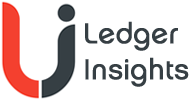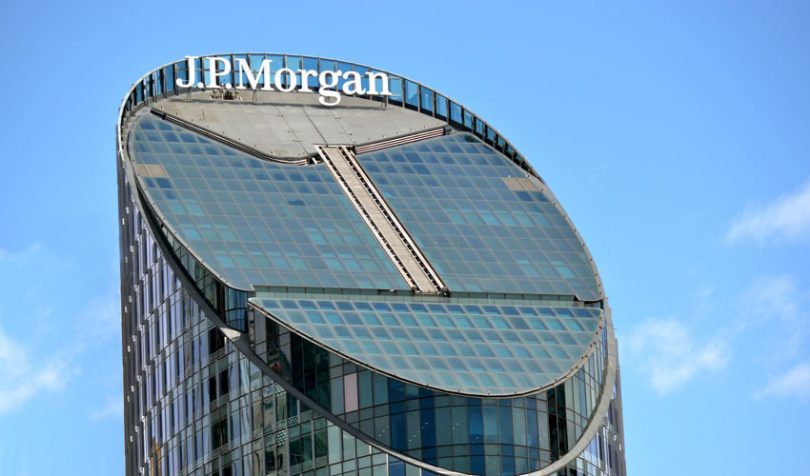In case you missed the biggest enterprise blockchain news for August, J.P. Morgan transferred its Quorum open source blockchain to ConsenSys and also became a ConsenSys shareholder. The investment amount was not confirmed but was rumored to be $20 million in convertible debt.
The big question is, what is the future of J.P. Morgan’s Quorum? All is revealed.
The J.P. Morgan motivation
The possibility that J.P. Morgan would spin off Quorum first surfaced in March 2018. The original project leader, Amber Baldet, left the bank the following month to start her own business. At the time, the rumored rationale was a reluctance of rival banks to use it. We wrote of a lack of fit of an open source project used in numerous sectors outside of finance, and the need to provide enterprise support.
Those are both still valid reasons.
Another potential motivation for offloading Quorum is JP Morgan’s involvement in non Quorum projects. J.P. Morgan is leveraging Quorum for projects such as its Interbank Information Network (IIN) payment messaging system and JPM Coin. But it’s a participant in the CLSNet DLT forex platform, which is based on Hyperledger Fabric. It’s involved with collateral management platform HQLAX and the SIX Digital Exchange (SDX), both of which use R3’s Corda. (The bank dropped out of backing R3 back in 2017). J.P. Morgan recently joined fund management platform Calastone, which uses Enterprise Ethereum, but we don’t think it’s Quorum.
So while it may want to use Quorum for J.P. Morgan led products, it also needs to keep its options open.
And things have moved on since the bank started work on Quorum in 2016 when they built a protocol because they perceived a need. Now that the market is a little more mature, it makes more sense for J.P. Morgan to focus on financial solutions rather than the core technology.
Also, GoQuorum under Baldet’s leadership, was the number one in enterprise Ethereum. It now has competition in the form of Hyperledger Besu, which was incubated by ConsenSys company PegaSys. Besu, by becoming part of Hyperledger has plugged into both the Hyperledger ecosystem as well as the existing Ethereum one.
J.P. Morgan likes to be a winner, so it makes sense to hand over Quorum when it still holds the enterprise Ethereum crown.
Mixing and matching of Besu and Quorum
With the acquisition, there are currently two flavors of “ConsenSys Quorum”, Besu and GoQuorum. But that’s only for now.
At a technical level, there are two parts of both Quorum and Besu. One is the Ethereum client and the other is the secret sauce for private transactions where GoQuorum and Besu also each have different solutions.
Short-term, there will be two flavors of Quorum, but medium-term Quorum will become the Besu Java Ethereum client combined with the ex-J.P. Morgan Tessera layer-2 solution for private transactions.
The fact that Besu is written in Java, the enterprise favorite, is an advantage compared to GoQuorum’s Go language. The other disadvantage of the Go Ethereum dependency is the less permissive LGPL 3 license compared to the Apache 2 license favored by corporates and used by Fabric, Corda and Besu. With Apache2, companies don’t have to contribute changes back to the source code. Tessera is written in Java and has an Apache 2 license.
This mixing of Besu and Tessera was confirmed by ConsenSys CEO Joe Lubin in a podcast with Laura Shin last week. He said that the Go Ethereum client will continue to be developed and maintained by the J.P. Morgan team for at least the next year and supported by ConsenSys. In the meantime, Tessera, the J.P. Morgan private transaction solution, will be integrated with Besu by the ConsenSys team.
This most definitely fits in with the ConsenSys roadmap. One of its strategies is to have a single enterprise Ethereum client that can work on both permissioned blockchains and the public main net, which Besu is designed to do.
Additionally, ConsenSys is working on making GoQuorum and Besu implementations interoperable and compatible. This will ease the migration from one implementation to the other.
Although ConsenSys supports the enterprise desire for private transactions, it is keen for firms to use the public version of Ethereum. Besu provides an easy transition from permissioned to permissionless. And apart from Besu, ConsenSys is also heavily pushing the Baseline Protocol, which uses the main net. That’s driven by its belief that permissionless is the way to go. And if there were extensive adoption of public Ethereum by enterprises, it would be pretty good for the valuation of Lubin’s stash of ether.
The likely future sunsetting of the Go Ethereum aspect of Quorum also answers the question about the J.P. Morgan blockchain technical team. For the next year, it’s more of the same, working on the Go Ethereum client and with ConsenSys to define the roadmap. It seems unclear beyond that. Hence its team could become a poaching ground. In the run-up to the announcement, J.P. Morgan’s blockchain strategy leader Oli Harris jumped ship to Goldman Sachs.
A mega win for ConsenSys
If the deal makes sense for J.P. Morgan, it’s a blowout win for ConsenSys. The startup has already been involved with major Quorum projects such as komgo for trade finance, Covantis for agribusiness and LVMH. But the kudos of being entrusted by J.P. Morgan with a brand, protocol and investment is priceless.
Not to mention the welcome injection of cash during these crisis times and new business from a prestigious client.
“We had projections that would have seen us double our revenues this year. And we have had to scale that back a little bit,” Lubin told Shin. “We’re still going to almost certainly achieve revenue that is a good chunk larger in percentage than last year. But we’ve certainly seen slowing down and dropping of some projects. But we’ve seen a lot of new interest. Some of the new interest may be related a little bit to COVID. So there’s been some identity projects that have popped up and around health passports and things like that.”
He said the rumors of the Quorum acquisition (six months ago) drove a lot of new interest. However, J.P. Morgan leaked it was looking to offload it almost 2.5 years ago.
Lubin explained that ConsenSys will be supporting the IIN and JPM Coin projects. And he implied there were other projects which have not yet been announced.
In terms of the investment, details were not announced, but we believe this is the first outside investor following Lubin’s funding of ConsenSys through his ether wealth. He was a co-founder and first major financial backer of Ethereum. In April 2019 it was rumored that ConsenSys was looking to raise $200 million in external funding. At that stage, the ether cryptocurrency price was around $170 and currently stands at more than 2.5 times that value and rising. With J.P. Morgan’s stamp of approval, attracting new investors might prove easier.
A question remains. Why did it take so long to get a deal done given ConsenSys was the likely home for Quorum back in April 2018? The adoption of Quorum in the interim is impressive, given it has had a cloud hanging over it. Was the delay down to J.P. Morgan, ConsenSys or likely both? And did COVID-19 perhaps provide that final push?
In conclusion, the future of Quorum is now clearer. There are still three major enterprise blockchain contenders – Quorum, Corda and Fabric. But if the internet era is anything to go by, the top contenders in 3-5 years may look different.






